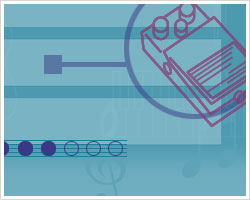A vast array of audio effects are used in virtually all popular music today, both in studio and live settings. Effects can be used to add color to a sound, or to completely reshape it. If you play guitar or bass, you are probably already familiar with at least some of the effect pedals that can be used to alter your tone. Effects are also found frequently on amplifiers and PA mixers.
Here are some of the most widely used effects:
Equalizer (EQ) - Boosts or reduces specific frequencies in a signal. Adjusts the bass, mid-range and treble components of a sound. Frequently found on PA mixers, equalizers can also be used to reduce feedback.
Distortion/Overdrive - Creates a 'dirty' or 'fuzzy' sound by compressing the original signal and adding overtones to it.
Reverb - Simulates the effect of a room on the original signal, based on the echoes created when the signal bounces and reflects off the walls of the room.
Delay - Repeats the original signal after a specified unit of time.
Chorus - Thickens a sound by producing the illusion of multiple instances of the original signal.
Flanger/Phaser/Tremolo - Creates a 'whooshing' sound by mixing the original signal with another that has been 'phase-shifted'.
Regardless of your instrument or style, knowing the basic sounds produced by each of these effects will help make you a better musician. It will also help you to make better decisions about what kind of gear and settings to use. When you are sound checking for a live performance, you will be better able to explain to the engineer at the mixing board what kind of sound you want from the PA (especially regarding reverb and EQ).

